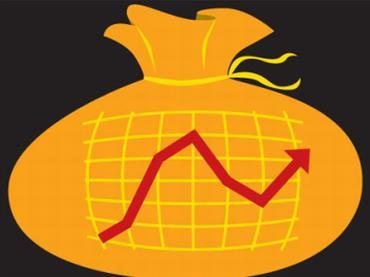
Shiva is working for a mutual fund house. They have recently come out with an NFO (new fund offer). The day on which the fund house announced its maiden NAV (net asset value) he received lot of calls from investors asking why the NAV is at below par (below the face value which in most NFOs is Rs 10). They thought something was wrong.
Then Shiva went on to clarify that though both an equity fund and a stock extend market-related returns, there are some key differences between the two. If you have similar misconceptions about equity funds and stocks, this article will demystify all those misconceptions.
Misconception # 1: NFOs generate amazing returns
Let us be clear in our minds that a new fund offer is not likely to generate amazing returns as can be the case with an initial public offering from a company.
This is because the NAV reflects the market value of the stocks held by the fund on any given day. Because a fund holds several stocks in its portfolio, the NAV can only reflect the combined returns on the portfolio between the NFO date and the date of first NAV.
The first NAV declared by a fund can, at times, be lower than the par value of investment. A lower NAV does not mean a cheaper fund: Just because a new fund is issued at Rs 10, it does not mean it has a chance of giving better returns than an existing fund that has a higher NAV.
Whether the scheme in which you are planning to invest has an NAV of Rs 15 or Rs 150 does not matter at all.
Click NEXT to read misconception # 2: MF units with higher NAVs are expensive.
K Ramalingam, an MBA (Finance) and certified financial planner, is founder & director of Holistic Investment Planners (P) Ltd. He can be reached at ramalingam_007@rediffmail.com

There is a difference between the price of a listed security and the NAV of a mutual fund scheme. Listed security has a price determined by the demand and supply of the security. Whereas the NAV of the scheme has a value determined mathematically, by the prices of the securities in the portfolio.
If the portfolio appreciates by 10 per cent the Rs15 NAV will become Rs 16.5 and Rs 150 NAV will become Rs 165. So in whatever the NAV you invest your investment will fetch you only 10 per cent return.
So instead of concentrating on low NAV and more number of units, it is worthwhile to consider other factors (performance track record, fund management, volatility) that determine the portfolio return.
A fund with higher NAV may give higher returns than a fund with lower NAV if its stocks did better in the markets. So, the price per unit of a mutual fund when you buy it does not matter.
| Point of distinction | Equity fund | Stocks |
| Level of risk | High | Highest |
| Entry/exit cost | No entry Load; but there will be exit load. Advisory fee may be applicable. | Demat ac and brokerage charges as applicable |
| Options | Options available like dividend payout, dividend reinvestment, and growth. | No such options |
| Minimum investment | Min investment is usually Rs 5,000 | Even one share can be bought |
| Measuring performance | Returns vs Benchmark b | Net profit margins/EPS (earnings per share) |
| Sub-division | Classified based on stocks in which it invests. (Diversified, mid cap, sectoral, thematic) | Classified as per the industry in which it operates (FMCG, IT, PSU, Metal) |
| Systematic purchase | Investor can give SIP instructions to the fund. | No such facility |
| Pricing | Based on the price of the underlying securities | Based on the demand and supply of the particular stock |
Click NEXT to read misconception # 3: Dividends are extra returns

In fact, dividends are not extra returns.
Immediately, after the dividend payment the NAV of the fund will fall to the extent of the dividend payment. Let us illustrate.
Let us assume that the NAV of a given fund cum dividend NAV is Rs 25. Proposed dividend is 50 per cent. When you are investing Rs1 lakh you assume that you will get Rs 50,000 as dividend. But this is not how it is calculated. It is only Rs 20,000 (50 per cent on the face value of Rs 10 is Rs 5 per unit). As the unit price is Rs 25 you will get 4,000 units (Rs 1 lakh divided by Rs 25). Rs 5 dividend * 4,000 units = Rs 20000.
Get the point.
And this dividend is not an additional gain or income. After payment of dividend the NAV of the scheme will fall to the extent of the payment and distribution taxes (if applicable). After dividend is credited to your bank account on a given date your NAV will become Rs 20 (Rs 25 less Rs 5 as the dividend paid out) and your investment value will be worth Rs 80,000 (4,000 units * Rs 20 NAV).
In a nutshell:
Investment amount = Rs 1,00,000
Dividend amount = Rs 20,000
Present value = Rs 80,000
It is nothing but investing Rs 80,000 after dividend distribution at NAV of Rs 20.
So investing in a scheme because it is declaring dividend in the near future is meaningless. Usually a company with a liberal dividend policy may enjoy greater investor interest in the stock market. The same is not applicable to an equity-oriented mutual fund.
Click NEXT to read misconception # 4: More MFs in your portfolio means better diversification

Another important point to remember is that investing in more number of funds is not actual diversification. It may reduce your return.
Owning several mutual funds doesn't necessarily broaden your holdings. It will be a mistake to buy the same securities over and over again in different funds with different names. You tend to believe they're diversified. But it is not real diversification.
There are only very few funds which are performing consistently. Instead of investing in few funds, if someone chooses to invest in more number of funds (because s/he intends to diversify) s/he may be forced to choose some average performing schemes. As a result her/his returns will be diluted. The step taken by the investor to diversify her/his investment is not leading to diversification but to dilution of return.
Thus ideally your portfolio should not have more than four to five funds.